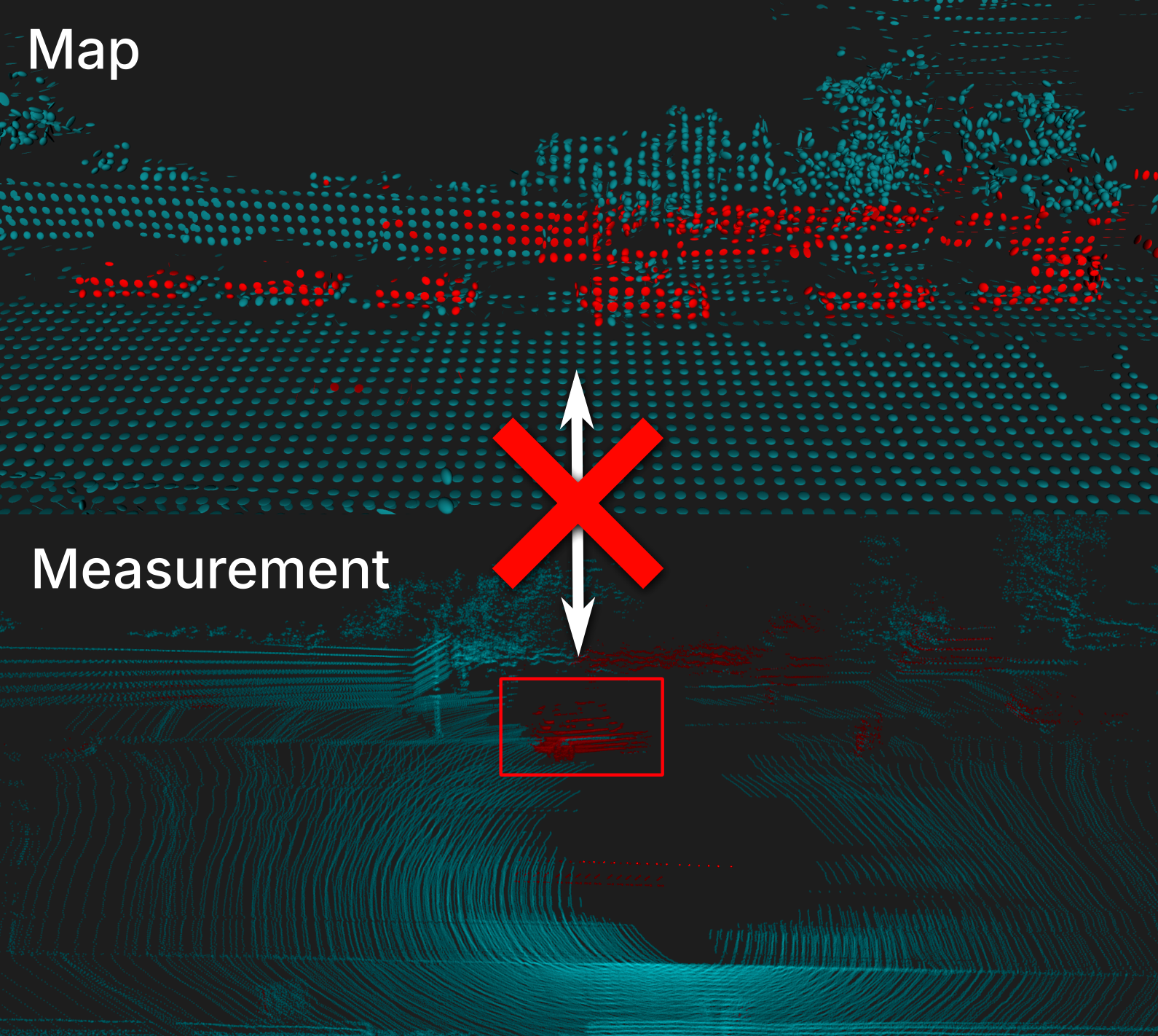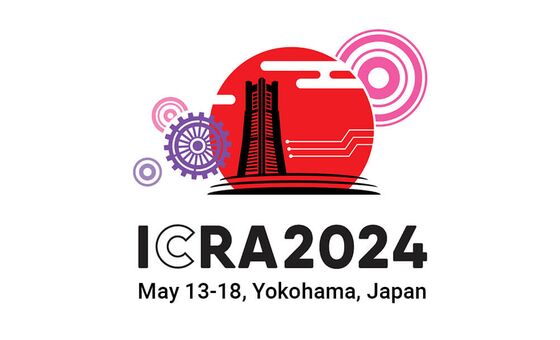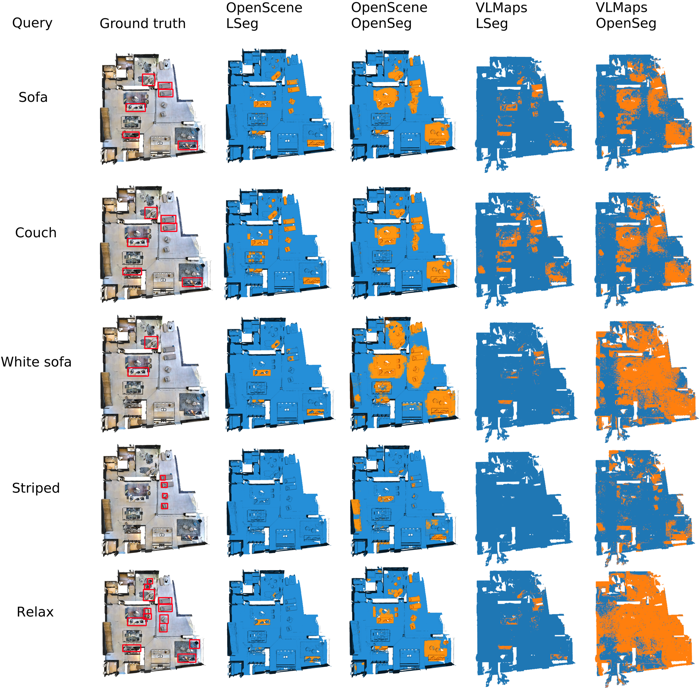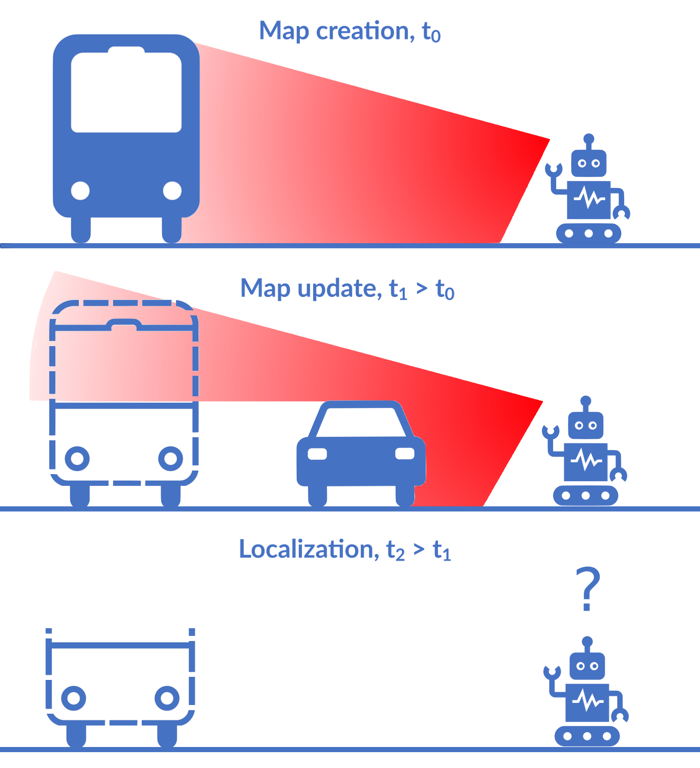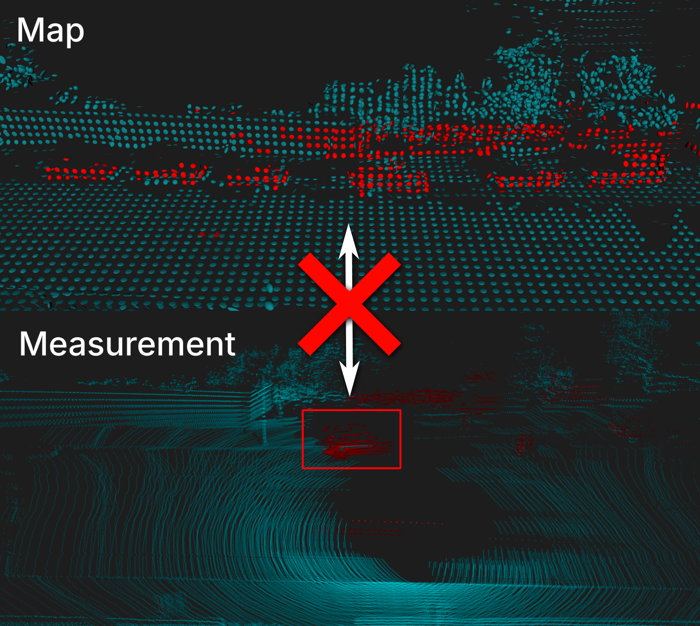Do visual language maps capture latent semantics?
Download the paper: arXiv
Submitted to IROS 2024.
Visual-language models (VLMs) have recently been introduced in robotic mapping by using the
latent representations, i.e, embeddings, of the VLMs to represent the natural language semantics
in the map. The main benefit is moving beyond a small set of human-created labels toward
open-vocabulary scene understanding. While there is anecdotal evidence that maps built this way
support downstream tasks, such as navigation, rigorous analysis of the quality of the maps using
these embeddings is lacking. We investigate two critical properties of map quality: queryability
and consistency. The evaluation of queryability addresses the ability to retrieve information
from the embeddings. We investigate two aspects of consistency: intra-map consistency and
inter-map consistency. Intra-map consistency captures the ability of the embeddings to represent
abstract semantic classes, and inter-map consistency captures the generalization properties of
the representation. In this paper, we propose a way to analyze the quality of maps created using
VLMs, which forms an open-source benchmark to be used when proposing new open-vocabulary map
representations. We demonstrate the benchmark by evaluating the maps created by two
state-of-the-art methods, VLMaps and OpenScene, using two encoders, LSeg and OpenSeg, using
real-world data from the Matterport3D data set. We find that OpenScene outperforms VLMaps with
both encoders, and LSeg outperforms OpenSeg with both methods.
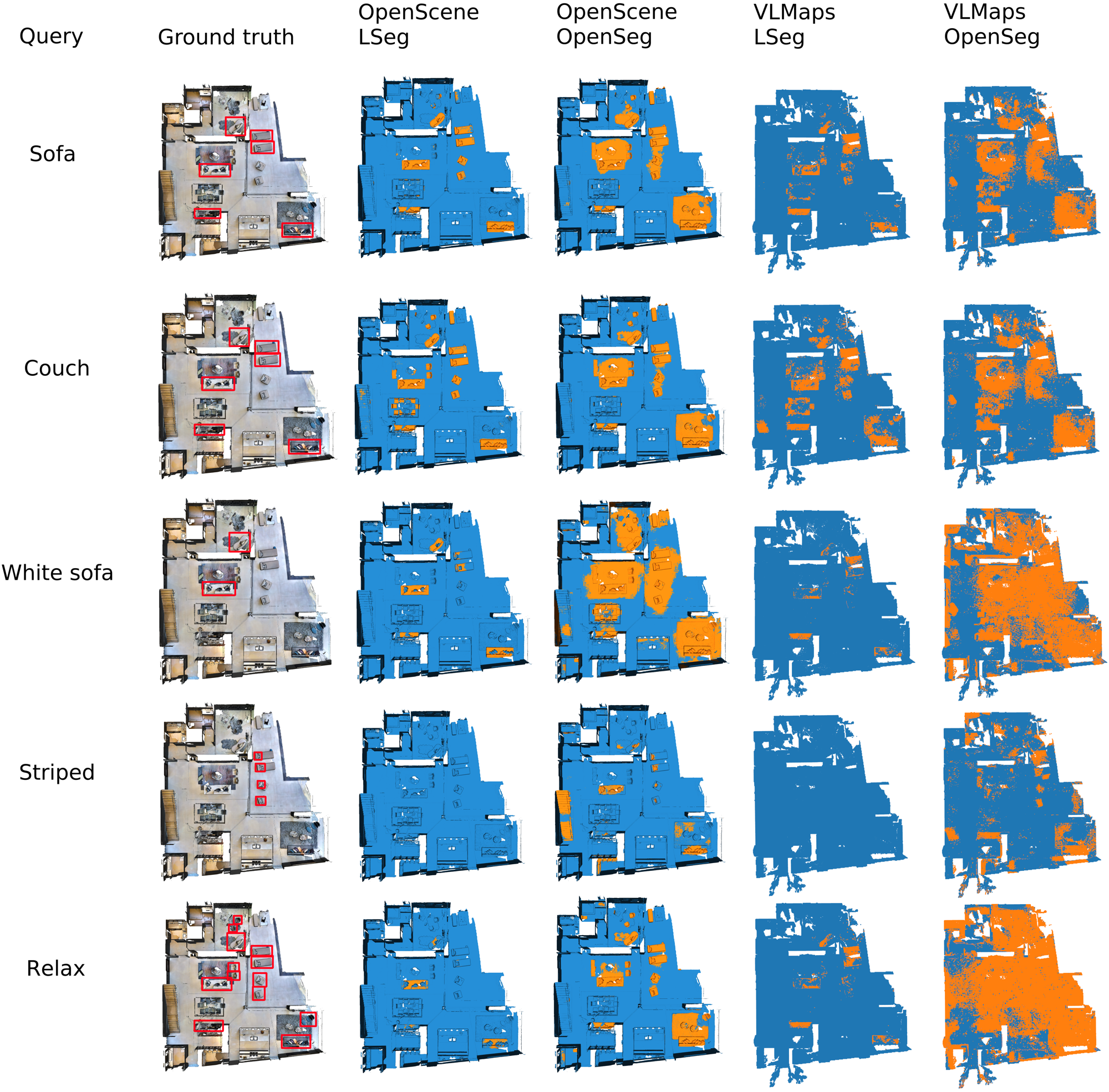
Object-oriented grid mapping in dynamic environments
Download the paper: arXiv
Submitted to MFI 2024.
Grid maps, especially occupancy grid maps, are ubiquitous in many mobile robot applications. To
simplify the process of learning the map, grid maps subdivide the world into a grid of cells
whose occupancies are independently estimated using only measurements in the perceptual field of
the particular cell. However, the world consists of objects that span multiple cells, which
means that measurements falling onto a cell provide evidence of the occupancy of other cells
belonging to the same object. Current models do not capture this correlation and, therefore, do
not use all available data for estimating the state of the environment. In this work, we present
a way to generalize the update of grid maps, relaxing the assumption of independence by modeling
the relationship between the measurements and the occupancy of each cell as a set of latent
variables and jointly estimating those variables and the posterior of the map. We propose a
method to estimate the latent variables by clustering based on semantic labels and an extension
to the Normal Distributions Transfer Occupancy Map (NDT-OM) to facilitate the proposed map
update method. We perform comprehensive map creation and localization experiments with
real-world data sets and show that the proposed method creates better maps in highly dynamic
environments compared to state-of-the-art methods. Finally, we demonstrate the ability of the
proposed method to remove occluded objects from the map in a lifelong map update scenario.
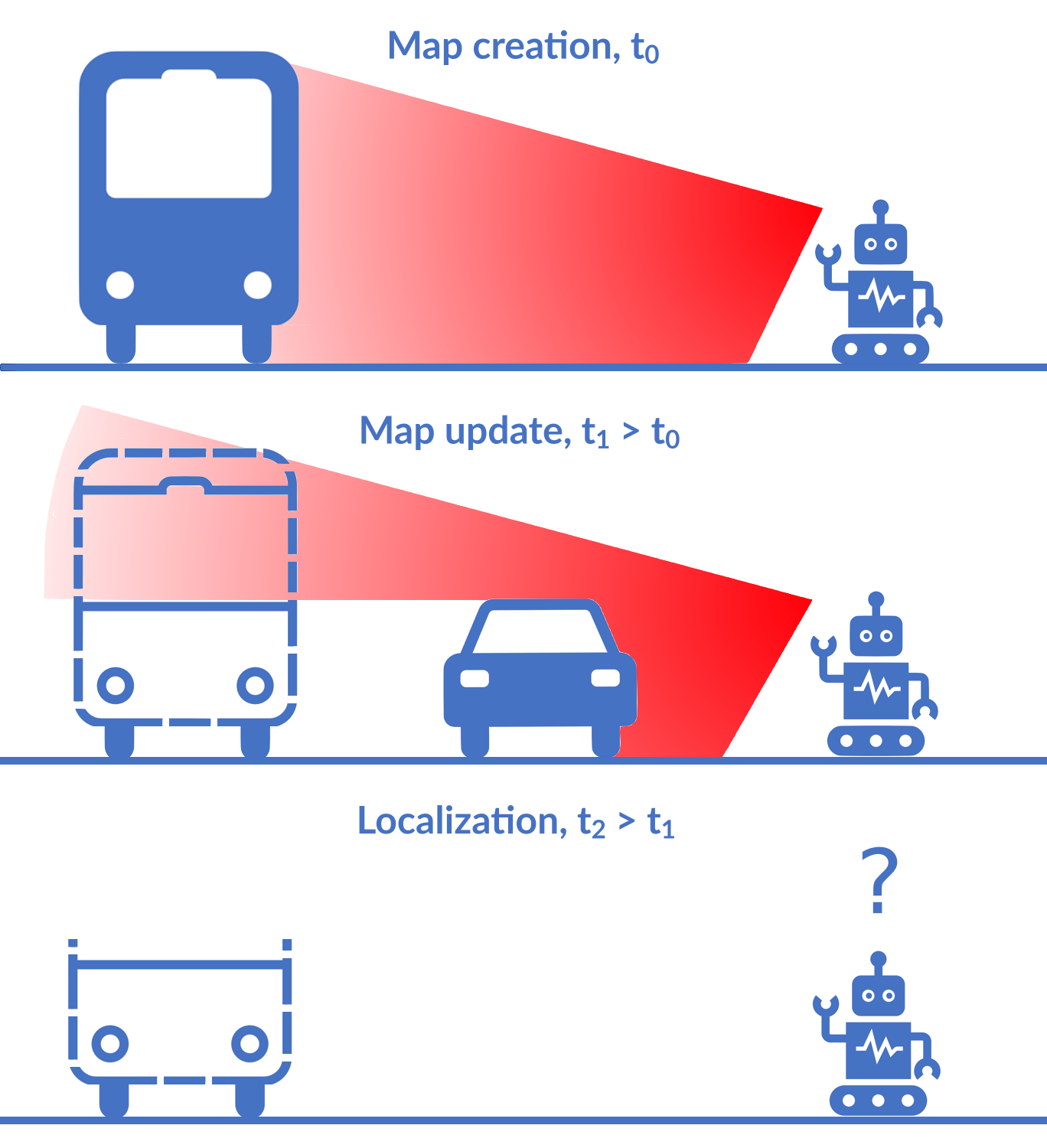
Localization under consistent assumptions over dynamics
Download the paper: arXiv
Submitted to MFI 2024.
Accurate maps are a prerequisite for virtually all mobile robot tasks. Most state-of-the-art
maps assume a static world; therefore, dynamic objects are filtered out of the measurements.
However, this division ignores movable but non-moving - i.e, semi-static - objects, which are
usually recorded in the map and treated as static objects, violating the static world assumption
and causing errors in the localization. This paper presents a method for consistently modeling
moving and movable objects to match the map and measurements. This reduces the error resulting
from inconsistent categorization and treatment of non-static measurements. A semantic
segmentation network is used to categorize the measurements into static and semi-static classes,
and a background subtraction filter is used to remove dynamic measurements. Finally, we show
that consistent assumptions over dynamics improve localization accuracy when compared against a
state-of-the-art baseline solution using real-world data from the Oxford Radar RobotCar data
set.
